Do you wonder how to go about actually starting your painting? What steps to take to bring it beyond a blank canvas? Well, you are in the right place because here we will go over what surface to start your painting on and how to sketch out your painting on your canvas. So you will get started on the right foot with your painting.
In this article you will find examples of how to sketch out a painting with different subjects. First watch the step by step, how to sketch out a painting video tutorial with a simple still life subject…
Painting Sketch Video Tutorial
Below you will learn how to sketch out a landscape painting and towards the bottom of this article I will go over how to sketch out a figure. The principles are the same for any subject you paint – however there are different things to pay attention to with different subject matter.
So without further ado let’s get started!
How to create a painting sketch of a landscape
A painting sketch or underdrawing, is a preliminary drawing you make on your canvas that will help guide where your painting will go.
However, before starting your sketch you first need to put a light color wash over the canvas. This is also called imprimatura, which is Italian for first paint layer and looks like a color stain on the painting ground. After the color wash is in place, you are ready to sketch out your painting. Doing a color stain on your canvas is hugely beneficial as it helps you to see value much more easily than on a stark white canvas.
Step one: The imprimatura
As mentioned above, the first step for how to sketch out a painting on canvas, is to prep the canvas with an imprimatura.
For this, you want to put down a light color wash for the painting as seen in the example photo. The imprimatura layer is part of creating an underpainting.
Second step: Start with the horizon line
Once you have your imprimatura on your canvas you are ready start sketching out your painting! I find it best to use a paintbrush and paint to sketch out a painting, instead of using a pencil. It is important to be able to change the drawing around as you get into your painting and by using paint you will be to do this quite easily.

Mix equal amounts of burnt umber and ultramarine blue together and use the mixture to create your line drawing painting sketch. Also, keep some turpenoid on hand as this will help to thin your paint. You do not want to use a lot of paint for your sketch. I try to use as little paint as possible and thin it out using turpenoid. We only need it to be visible enough to see it while we work on our painting – we do not want the sketch to be part of the completed painting!
So, do not mix up too much paint for yourself as you will not be needing a lot. I often use left over paint from creating my imprimatura. Also, I recommend using a small stubby paint brush. The stubbier the paint brush the more it will feel like a pencil!

The painting in my example here, is a painting sketch of what will be a landscape painting. Therefore it is necessary to first start with the horizon line.
Capture the general architecture of your painting
Whether you are working from observation or imagination – follow the movement of the line and try to capture a general sense of its ridges. They key word here is general. This is not meant to be a completely exact drawing – you will be saving the perfecting and exacting for when you start your painting with color.
If you haven’t yet – Grab my FREE Color Mixing Guide, for help with color mixing techniques used for painting!
Step three: How to move downward in your painting sketch
Continue on with your painting sketch before painting and try to find the big points in your piece and draw those in.
This initial underdrawing is to help you create your painting sketch and is NOT meant to be a precise drawing. Rather, the point is to capture the general architecture of your painting and its composition. You should not spend more than 5 – 10 minutes on the part of your painting sketch before painting.

In the example, I look for the hills that are in front of the horizon line. Generally, I am looking for and trying to capture the large areas that make up the landscape painting. Focus yourself on getting the big picture and capturing the general shapes of your subject in your painting.
Step four: Find the general lines in the rest of your painting sketch
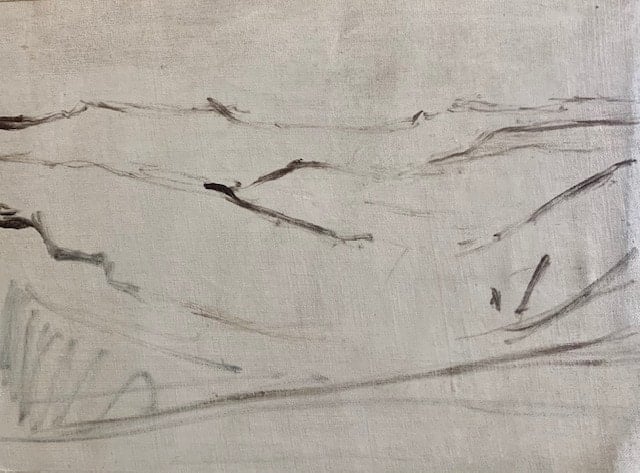
Now, that the initial part of the landscape underdrawing is there, it is time to put in the rest! In the image above you can see that I sketched in with my paintbrush, the foreground line as well as the additional hills in the middle section of the landscape.
Remember, the painting sketch is not meant to be perfect and look exactly like your subject. Rather it is meant to be a very general architecture for you to be able to work from. In other words, think of what it would be like if you were to start with no sketch at all – you would have no idea of ‘where’ to start right? When putting in a sketch of your painting it serves as a guideline for you to know approximately where to start.
As you progress in the painting you will adjust measurements to make them more accurate to the subject you are painting. So, there is no need right from the beginning to try and make a completely accurate sketch – because it will need adjusting anyway!
So, as you paint, to help create a more realistic painting, you will be able to remeasure elements and put them in their correct placement. A basic underdrawing such as the one outlined in this post, gives you the chance to see your composition in full. As well as helps to give you a general idea of the placement of things in your painting.
Step five: Look for the values within your painting sketch
Last but not least, it is helpful to give yourself a brief idea of the tonality of your painting.
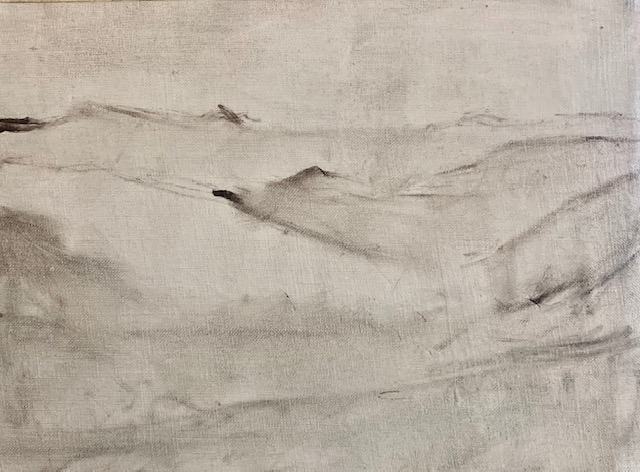
In this example, you will see I very lightly drew in where the shadow areas will be in the painting and I left the “light” areas as they were.
Utilizing tonal value drawing aspects in your underdrawing, will help to give yourself a little clarity when it comes to where the light and dark areas are in your painting.
Finishing the painting sketch of a landscape
Now you know how to create an underdrawing and are ready to dive in!
Just make sure that your painting sketch is dry before continuing the rest of your painting. So that the colors you mix for your painting, do not get diluted by the color of your underdrawing.
Again, do not be afraid to move things around a little bit if necessary as you paint. The painting process should always involve self correction at every step. The preliminary drawing you make on your canvas should always just be a basic and general guideline.
Once you have your underdrawing in place you’re ready to start adding some color and light to your painting.
How to sketch out a painting of a figure
Now that you know how to sketch out a landscape painting I will now show you how to sketch out a figure. The principles remain the same in that you are not going after creating a perfect drawing – rather just trying to capture the basic architecture of what you are painting.
First sketching out the figure’s hat
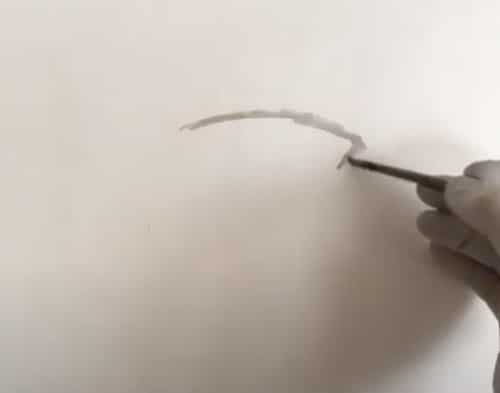
When sketching out a figure I first start at the top portion of the subject which usually is the head. In this case, I start the painting by first painting the hat that is on top of the figure’s head. Like in the landscape painting sketch, I use a small amount of my mix of burnt umber and ultramarine blue to sketch out my painting.
Work on getting accurate angles
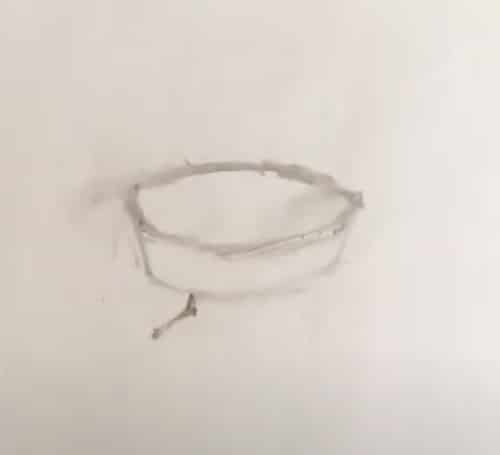
I mentioned numerous times that this painting sketch is not meant to be an exact drawing of the subject – rather it serves as a general architecture of what you will paint. However, when it comes to angles it is important to work on capturing accurate directions of angles.
For example, in the image above notice how I capture the precise angles of the hat. Having accurate angles helps you in the long run as you will at least know what direction your angles need to be at. You might need to slightly adjust or fine tune some angles – but you will have the bulk of the job done!
Sketching the figure’s face and body on canvas
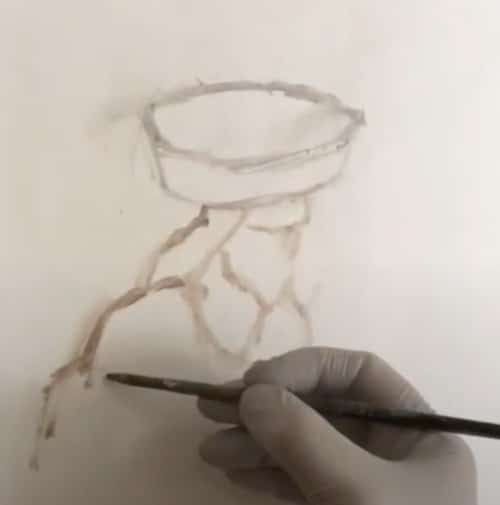
Here I paint the face, hair and upper body of the figure. As you can see, I only go after the big general shapes. I do not at this point paint the details of the eyes or mouth. Rather, I look for the shape that the profile of the face creates and pay attention to the large ridge created by the eye brows. I also look at the shape of the upper body and paint the profile of the arm. Never get caught up in details when creating your painting sketch – just focus on the big picture!
Painting clothes of the sketch for painting

When sketching out a figure it is also important to paint the clothing. Don’t paint any detail but look at the big shapes of the clothing. For example, in the image above I paint the shape of the shawl that is draped over the figure.
Finishing up the figure painting sketch

Now it is time to finish up the painting sketch. I put in a bowl that the figure is holding. Then I marked out any other basic shapes such as the drapery beneath the bowl.
Another important thing worth noting is that you can pay attention to value when creating these painting sketches. Notice how some of the lines are darker while others are lighter. The darker lines signify areas that are darker in value. So, you can make value notations even when sketching out your painting!
Create a painting sketch of your own
The beginning of a painting is crucial as it affects how a painting turns out in the end. Put these lessons to practice and start your painting by sketching it out on canvas first. Leave a comment in the section below and let me know how your painting sketch goes!
Put your paint sketch skills to use with the help of these tutorials:
Resources found in this post:
Want to remember this? Save How to Sketch Out a Painting to your favorite Pinterest board!

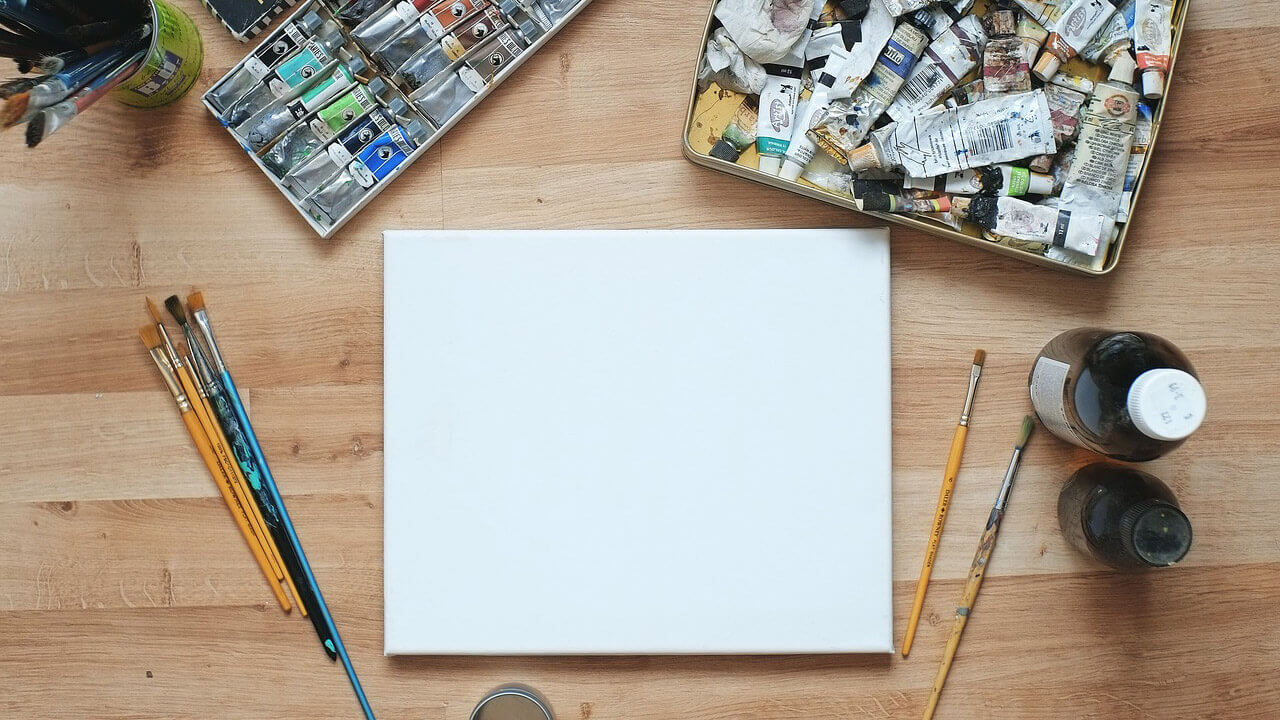

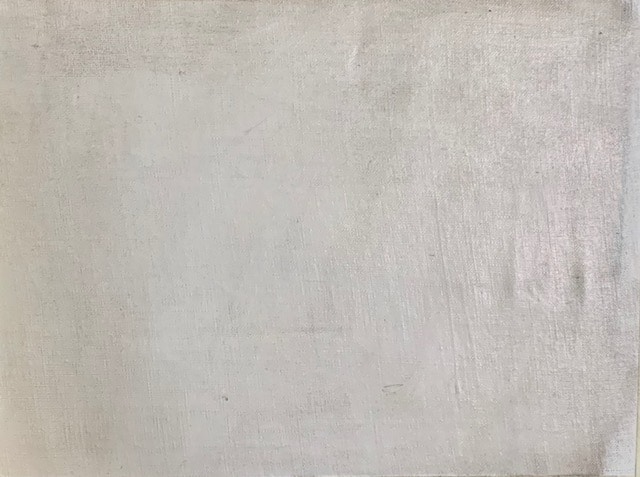
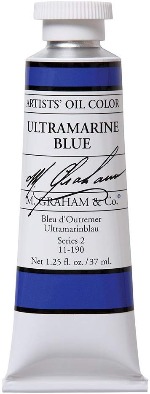
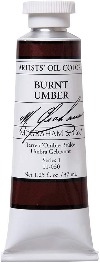
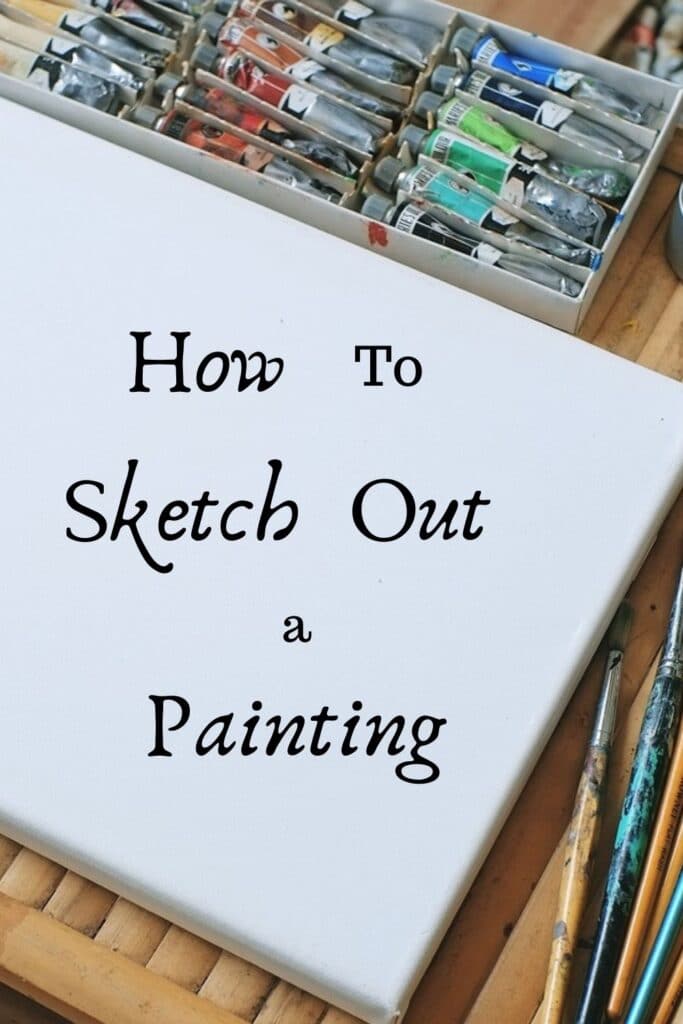


28 thoughts on “How to Sketch Out a Painting and Create a Painting Sketch”
Celebrating a newfound joy in this step! Up to know it has been a chore…I can see the difference completing the 2nd Study in the use the Anatomy of Color. The Turkish Balloon Festival mug is really taking shape rereading your well documented articles with more experimenting mixing paint.
I look forward to seeing your Turkish balloon festival mug painting when you are done with it!
I loved reading this info ….so informative and very interesting. Going to give all of your info a try
Glad you enjoyed this and that it is helpful!
Hi! I am a book learned artist and have never taken any classes for drawing or painting. I have always just painted how I see. My husband has recently gifted to me a see – thru black canvas set. How do tonal and temperature rules apply to this type of canvas?
Hi Danielle, That is a good question. Value plays a much bigger role than anything else when using a black canvas versus a white canvas. In general, your painting will likely turn out darker than usual as everything you place on it will look very very light against the black surface. The sense of light that one gets with a black surface is different than a lighter value surface. I hope that helps!
Hello! I’m just wondering whether your father is perhaps Carl Laarson?
No relation to Carl Larsson – though I do have some Swedish relatives 🙂
I love Art and would to do oil painting but subscribe you for oil painting affects me even with the window open and I do it in my bedroom in the Nursing home
Hello Bernadette! Sorry to hear that oil painting affects you even with the window open. A good alternative is to use water soluble oil paints – they can be great to use. Also, acrylic paints can be a good substitute!
You are welcomed to use my experience with the water soluble oil paints & easy to clean up. I also in a senior living center with minimum space.
Thank you Patricia 🙏
אליזבת שלום
תודה על ההדגמה,ההדרכה שלך מועילה מאוד
יש באפשרותך להראות איך לצבוע עיגול בצבע אקרליק
וסוג המכחול לשימוש
תודה
רותי
,
שלום רותי,
אני שמח לשמוע שההדרכה מועילה.
תודה על ההצעה!
אליזבת
Thank you
It was verry amazing and the way to explain is understood and helpfully
Bless you
You are so welcome! I am very glad to hear that the article is helpful!
תודה רבה לך, עצות מועילות מאוד.
בבקשה! אני שמח לשמוע
Thank you! You just solved a problem for me. I am planning a painting involving mountain landscape with portraiture. No more thumbnail sketches for me. It is so much more meaningful to work right on the canvas.
I am happy to hear that! Yes, it is really wonderful to just get started right away on the canvas.
I want to paint some miners with their yellow overalls in a very dark mine (copying a painting by Sam Nhlengetwa, a South African artist.) So, I’ve had to cover the whole canvas in several layers of dark brown and ultramarine to get that depth.
Now I need to paint the miners on top of this (dryish) background.
How do I sketch them first – white chalk or maybe paint in buff titanium?
Christine
Personally, I always create a very light color ground on my canvas and then sketch in my painting with a slightly darker color so that I can see what I am sketching. In your case it sounds like you created a darker ground – which is a good idea for creating a dark painting! I would sketch them in with a color that is just slightly lighter than your ground so that you can see what you are sketching (mix a little white with brown/ultramarine blue). I would try not to make it too light light so that you will not have to work too hard at painting over the outline as you paint in the miners in the painting. Good Luck!
Love getting new ideas to try also nice to see who likes your pins.
Thank you, glad you like the ideas on this website!
I appreciate the time you have taken to give clear instruction and valuable information. Thank you so much.
You are welcome, it is my pleasure!
Thank you! I am a beginner and I have no idea where or how to start. Thank you for being there!! Granny’s Angels would love to having paintings done by me. I am also a great granny at 78. I want to learn!
oh that is great! I am sure they would be delighted with some paintings! I am in the midst of creating more articles for beginners. But in the meantime there is a beginning painting guide that might be helpful.